In New Jersey, for small bathrooms and living spaces, a combination of big tile and small tile offers a perfect balance between spaciousness and intricate design. Big tile creates an illusion of space by reducing grout lines and making the area feel more expansive. In contrast, small tile, such as mosaics, adds rich detail and texture without overwhelming the room.
Choosing the right tile installation patterns enhances this effect. A herringbone layout, for instance, dynamically draws the eye, creating movement and depth. On the other hand, vertical installations elongate walls, making ceilings feel higher and spaces larger.
By using design ideas that include both types of tiles, you can turn small spaces into pleasant areas. Large tiles can be used on the floors to make a smooth base, while small tiles can be used as highlights or backsplashes to add style and warmth. This thoughtful integration of big and small tiles, paired with strategic installation patterns, results in a cohesive and visually appealing design that maximizes the potential of any small area.
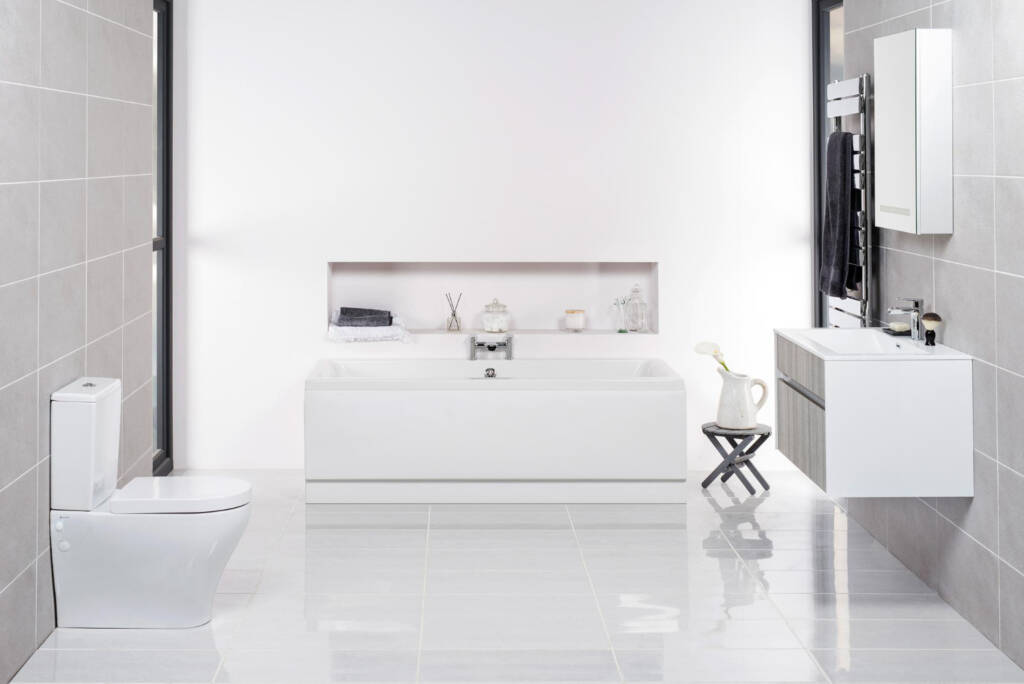
About The Author
Elton Suparaku, the owner of Precise Tiles & Stone, has spent 20 years developing tiling services. Since my start in the business, I’ve believed in exceeding expectations with my craftsmanship. I take the same care with intricate bathroom tile patterns and large outdoor patio jobs. I started tiling because I love making beautiful, durable environments, and that desire has only deepened. My team and I proudly assist homes and companies in New Jersey, bringing their ideas to life with accuracy. We create inspiring spaces at Precise Tiles & Stone, not just install tiles. I treat each assignment individually and want every client to adore the result. I look forward to serving New Jersey with the same dedication and high standards that have defined my career.
Subsequent Areas and Recommended Sizes
Small Bathrooms:
Floor Tiles: For compact spaces, consider tiles ranging from 1-inch to 6-inch. Smaller tiles help create a sense of space and allow for intricate layouts around fixtures.
Wall Tiles: Opt for sizes between 6-inch and 12-inch. This size range maintains a balanced look without overwhelming the room.
Medium Bathrooms:
Floor Tiles: In medium bathrooms, tiles from 4-inch to 12-inch provide versatility in design. Larger tiles can help reduce grout lines, giving a cleaner appearance.
Wall Tiles: Use tiles that are 8-inch to 16-inch for a modern feel. Larger wall tiles minimize seams and are easier to clean.
Large Bathrooms:
Floor Tiles: Larger formats like 12-inch to 24-inch work well here, enhancing luxury and reducing maintenance.
Wall Tiles: For walls, consider 12-inch to 24-inch tiles to create an expansive feel while adding a stylish touch.
General Considerations: Selecting appropriate floor tiles and wall tiles based on bathroom size promotes aesthetics and functionality, optimizing both small and large bathrooms alike.
Guideline for Shower Floor & Wall Tile Sizes
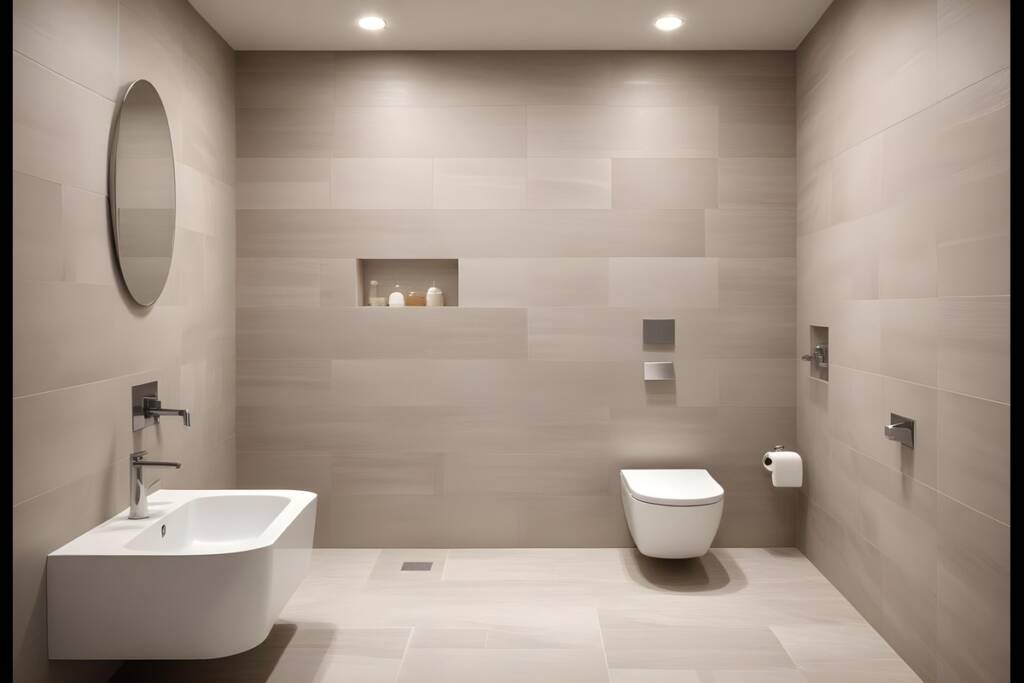
Choosing the right bathroom tiles is essential for ensuring safety, enhancing the overall look, and improving functionality. For shower floors, smaller tiles, typically ranging from 1-inch to 4-inch mosaics, are recommended. These sizes provide better grip and friction, significantly reducing slip hazards. They also aid in creating contours that promote proper drainage, ensuring water flows efficiently away from the shower space.
In contrast, larger tiles—those greater than 4 inches—are more suitable for shower walls and expansive bathroom spaces. Their size allows for a sleek, modern aesthetic and simplifies the cleaning process due to fewer grout lines. However, these tiles are less effective for shower floors, where traction and drainage are essential.
For the best safety and performance in your shower, go for smaller tiles on the floor to improve grip and drainage. On the walls, opt for larger tiles to create a stylish and low-maintenance appearance.
Guideline for Bathroom Wall Tile Sizes
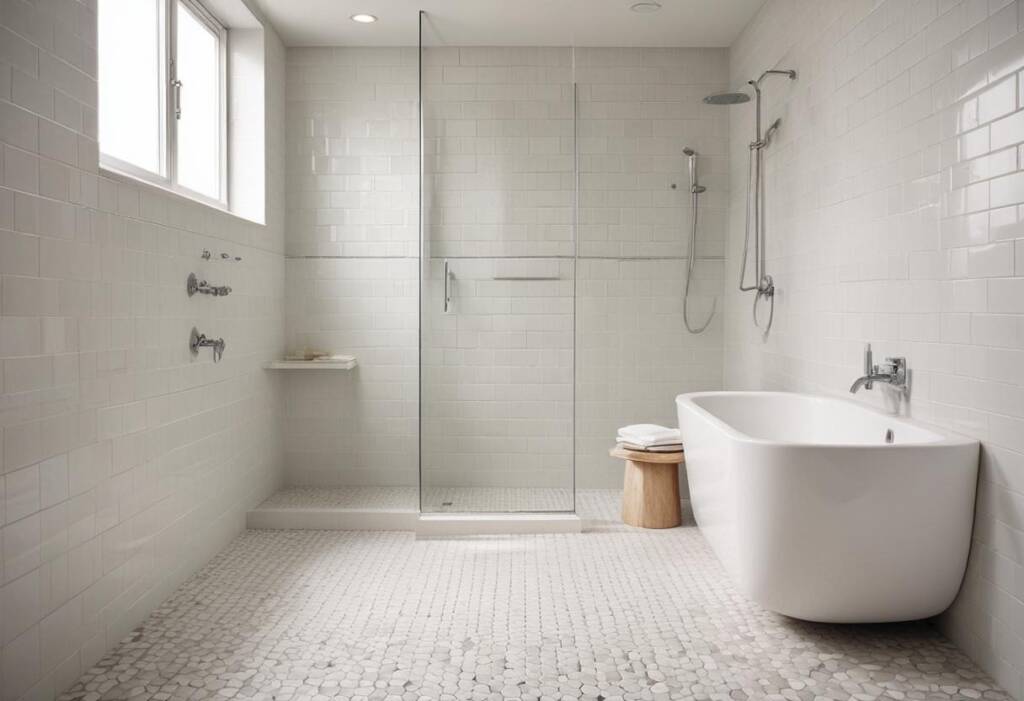
It’s important to pick tiles for the bathroom walls that are the right size and style to make the room look bigger. Select tiles that are at least 4 inches wide to make your bathroom look longer and feel bigger. Rectangular tiles, such as 4-inch by 24 or 30-inch options, are highly recommended, as they draw the eye upward and give the illusion of taller walls.
In addition, subway tiles are a well-liked option because they have a timeless and decorative appearance. They normally adhere to a size ratio of 1:2, which enables them to be utilized in a wide range of design schemes. The elongated shape of both rectangular tiles and subway tiles not only enhances visual height but also adds a contemporary touch to bathroom walls.
By using these tile sizes and types, you can make your bathroom look beautiful and functional. Choose tiles carefully to match the design and improve the wall effect.
Guideline for Bathroom Floor Tile Sizes
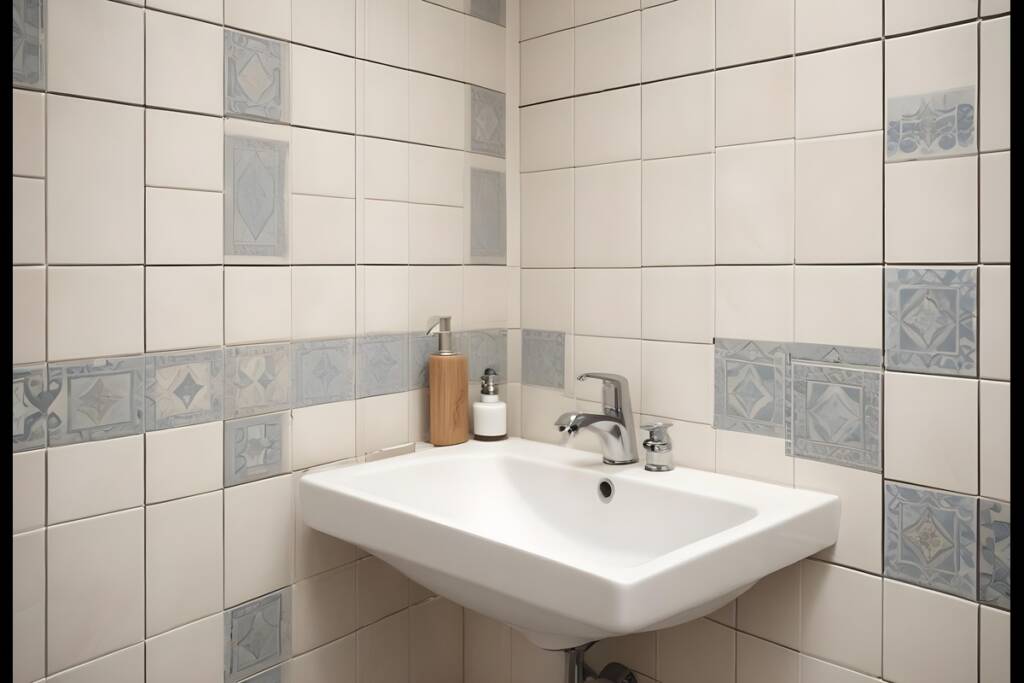
Conventional 12-inch by 12-inch and 24-inch by 24-inch tiles are popular choices, as they create a seamless look and simplify the installation process. Not only do these larger tile sizes improve the aesthetic appeal of your bathroom, but they also have the potential to lessen the appearance of grout lines, which makes maintenance much simpler.
In smaller bathrooms, consider adding 4-inch by 4-inch tiles. While they can create interesting designs, it’s essential to keep in mind the importance of friction for safety. Smaller tiles can provide better traction on wet surfaces, which is critical in spaces where water accumulation is common.
Finally, it’s important to accurately calculate the square footage of your bathroom before deciding on large format tiles. This step will assist you in finding the optimal amount of material, preventing unnecessary waste and creating a balanced layout.
How to Find Slip-Resistant Tile for Bathroom Flooring
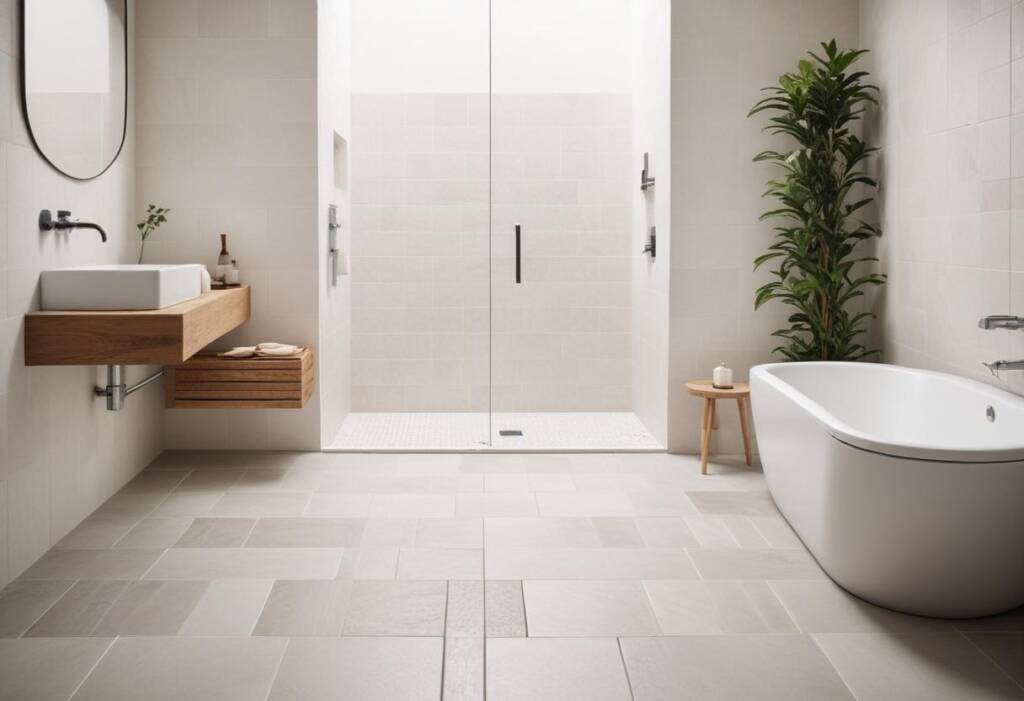
The coefficient of friction (COF) value plays a critical role in ensuring safety when choosing slip-resistant tiles for bathroom flooring, particularly in wet conditions. Look for tiles that have a COF rating between 0.3 and 0.6, as these values indicate a good level of grip when moisture is present.
Mosaic tiles often provide superior grip due to their numerous seams, which create more friction and reduce the risk of slipping. When choosing tiles, it’s also wise to select those with a naturally matte or coarse surface texture, as these features enhance traction. Plenty of grout lines not only add visual interest but also contribute to slip resistance by increasing the tile’s surface area for grip.
In summary, for safe bathroom flooring, prioritize tiles with the appropriate COF rating, consider mosaic options for better traction, and seek out matte or coarse surfaces with ample grout lines to ensure optimal slip-resistant performance. The type of flooring you choose can have a major impact on safety.
what size tiles for small bathroom floor? Will you go for a larger tile or opt for a smaller one?
Larger tiles can create a seamless look, reducing visual clutter, while smaller tiles might emphasize tight corners and crowded areas. However, medium-sized tiles often strike the perfect balance, offering versatility without overwhelming a limited space.
Light-colored tiles reflect more light, making small areas seem larger and more inviting. Complement their effect by experimenting with various installation patterns, such as diagonal or herringbone, which can add visual interest and create an illusion of more space.
For narrow spaces, consider using larger, elongated medium-sized tiles laid in a linear pattern to elongate the room. Conversely, in square layouts, a grid pattern with medium tiles allows for a balanced appearance while maximizing the area’s potential. Prioritize coordination with other design elements for a cohesive look that enhances your small bathroom or living space.\
For New Jersey homeowners, Precise Tiles and Stone offers a complete tilting solution for your bathroom. We have served hundreds of homeowners seeking flawless tile installations and breathtaking renovations.
Planning to install your bathroom tiles? Contact us.